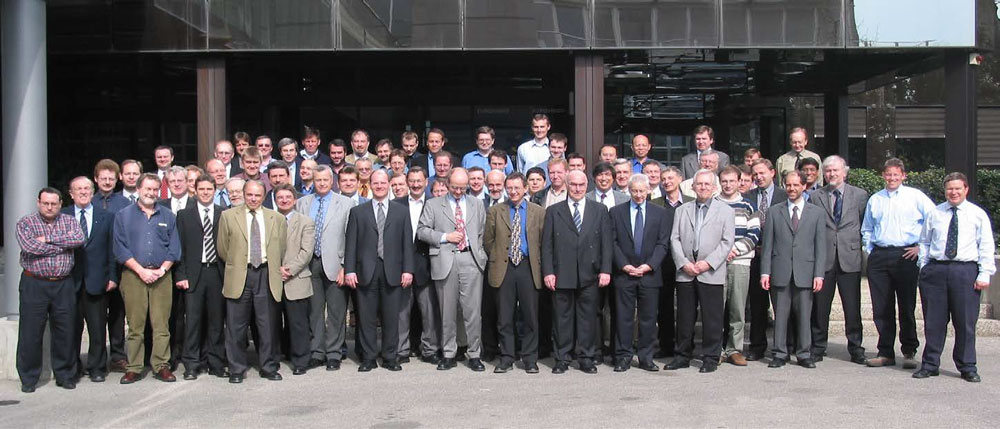History
Until around 1990, digital television broadcasting to the home was thought to be impractical and costly to implement. During 1991, broadcasters and consumer equipment manufacturers discussed how to form a concerted pan-European platform to develop digital terrestrial TV. Towards the end of that year, broadcasters, consumer electronics manufacturers and regulatory bodies came together to discuss the formation of a group that would oversee the development of digital television in Europe.

This so-called European Launching Group (ELG) expanded to include the major European media interest groups, both public and private, the consumer electronics manufacturers, common carriers and regulators. It drafted the Memorandum of Understanding (MoU) establishing the rules by which this new and challenging game of collective action would be played.
Around this time a separate group, the Working Group on Digital Television, prepared a study of the prospects and possibilities for digital terrestrial television in Europe. The highly respected report introduced important new concepts, such as proposals to allow several different consumer markets to be served at the same time (e.g. portable television and HDTV).
The concept of the MoU was a departure into unexplored territory and meant that commercial competitors needed to appreciate their common requirements and agendas. Trust and mutual respect had to be established.
The MoU was signed by all ELG participants in September 1993, and the Launching Group renamed itself as the Digital Video Broadcasting Project (DVB).
Broadcast standards
The DVB Project began the first phase of its work in 1993. The initial task was to develop a complete suite of digital satellite, cable, and terrestrial broadcasting technologies in one ‘pre-standardization’ body.
The DVB-S system was agreed in 1994, and the first DVB broadcast services in Europe started in spring 1995 by pay TV operator Canal plus in France. The DVB-T system was agreed later, in 1997. The first DVB-T broadcasts began in Sweden and the UK in 1998. DVB-T services started in parts of Germany in 2002, and in 2003, there was Europe’s first analogue switch off in Berlin.
By 1997 the development of the DVB Project had successfully followed the initial plans, and the project had entered its next phase, promoting its open standards globally, and making digital television a reality. DVB standards were adopted worldwide and became the benchmark for digital television worldwide.

2018 brought the 25th anniversary of the DVB Project and a chance to look back with pride on two and a half decades of cooperation, the success of which is plain to see around the world.
Source
David Wood wrote an article on the History of the DVB Project to coincide with DVB’s 20th anniversary in 2013. The text on this page is extracted from the full article.
Honorary Fellows
Honorary Fellowship has been granted to several individuals who made sustained and substantial contributions to the work of the DVB Project over the years.
